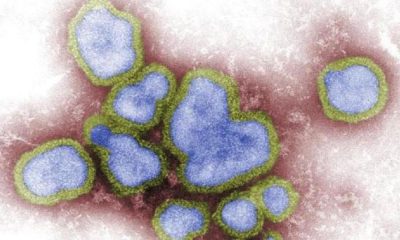Reviews
How Confined Space Training Can Prevent Workplace Hazards

Confined spaces present unique dangers in the workplace, making proper training essential for worker safety. Without adequate preparation, employees may face risks such as oxygen deficiency, toxic gas exposure, and entrapment. Confined area training equips workers with the knowledge and skills to identify hazards, follow safety protocols, and respond effectively to emergencies. Here’s how confined area training plays a crucial role in hazard prevention.
What Is Hazardous Environment Training?
Confined space training is designed to teach workers about the potential hazards that come with working in small, enclosed areas. These environments can present various challenges, from poor ventilation to the risk of harmful gases. The training provides workers with the skills and knowledge necessary to enter, work, and exit safely.
This type of training typically covers emergency procedures, the correct use of safety equipment, and how to assess the risks before entering these hazardous zones. It ensures that workers are prepared for any situation that may arise.
Recognising the Risks of Enclosed Environments
Enclosed areas can hide many dangers that workers may not anticipate. Common hazards include limited air supply, dangerous chemicals, or the possibility of becoming trapped. These conditions can lead to injuries or, in severe cases, fatalities.
By learning about these risks through proper instruction, workers gain a deeper understanding of the potential dangers. This knowledge is critical for taking the necessary precautions and ensuring safety when working in or around small, confined zones.
The Importance of Safety Gear
The correct use of safety gear is essential for protecting workers in confined settings. Training teaches employees how to use personal protective equipment (PPE), including harnesses, gas monitors, and ventilation systems.
With the right tools and techniques, workers can monitor air quality and ensure they have a continuous oxygen supply. This reduces the risk of exposure to hazardous substances, giving workers the ability to respond quickly if something goes wrong.
How Confined Space Training Helps Identify Hazards
A critical part of hazardous environment training involves teaching workers how to assess the environment before entering. Workers are taught to evaluate factors like airflow, temperature, and the presence of harmful gases.
This helps identify whether it is safe to proceed and if any immediate measures should be taken to mitigate risks. These assessments can mean the difference between safety and danger, allowing workers to make informed decisions before entering a risky environment.
Emergency Procedures and Rescue Techniques
When working in high-risk environments, knowing how to respond to emergencies is critical. Hazardous environment training ensures workers are prepared for unexpected situations. Here’s how it helps:
- Rescue Operation Procedures
Workers are taught how to conduct a safe and efficient rescue if something goes wrong. This involves understanding the use of specific tools and techniques to safely extract individuals in distress. - Quick Response Skills
Training emphasises quick thinking and fast action. Workers are equipped to handle emergencies, reducing response time and improving outcomes. - CPR and First Aid
Knowing how to perform CPR and administer first aid is crucial. Training prepares workers to offer immediate assistance, which can save lives before professional help arrives.
Legal and Regulatory Compliance
In many countries, there are strict regulations regarding safety in hazardous environments. Adhering to these laws is not only important for the health and safety of workers but also for avoiding legal complications.
Hazardous environment training helps ensure that organisations comply with these standards. By following proper procedures and guidelines, businesses can avoid fines, lawsuits, and potential shutdowns while maintaining a safer working environment for their employees.
Boosting Worker Confidence and Morale
One of the often-overlooked benefits of proper training is the boost in confidence it provides. Workers who are trained in confined space entry know they are prepared to handle whatever comes their way.
This confidence can lead to improved job satisfaction and higher morale. Workers who feel safe in their roles are more likely to perform their tasks efficiently, reducing the likelihood of accidents due to anxiety or confusion.
Preventing Long-Term Health Effects
Working in confined areas can sometimes result in long-term health problems if proper precautions aren’t taken. Prolonged exposure to toxic gases, for example, can cause respiratory issues, while physical strain can lead to musculoskeletal injuries.
With proper hazardous environment training, workers learn not only how to avoid these immediate dangers but also how to minimise the risk of long-term damage. This ensures their overall well-being is preserved, even after years of working in these environments.
Confined space training is a crucial aspect of maintaining a safe working environment. By educating workers on how to assess risks, use safety equipment, and follow emergency procedures, businesses can prevent many of the hazards that are commonly associated with small, enclosed spaces. With the right knowledge and preparation, workers can enter confined spaces with confidence, knowing that they are equipped to handle whatever comes their way.

-

 World1 week ago
World1 week agoEthiopian volcano erupts for first time in thousands of years
-

 Health2 days ago
Health2 days ago8 kittens die of H5N1 bird flu in the Netherlands
-

 Legal7 days ago
Legal7 days agoUtah Amber Alert: Jessika Francisco abducted by sex offender in Ogden
-

 US News6 days ago
US News6 days agoExplosion destroys home in Oakland, Maine; at least 1 injured
-

 Health7 days ago
Health7 days agoMexico’s September human bird flu case confirmed as H5N2
-

 Legal3 days ago
Legal3 days ago15 people shot, 4 killed, at birthday party in Stockton, California
-

 World1 week ago
World1 week agoWoman killed, man seriously injured in shark attack on Australia’s NSW coast
-

 US News2 days ago
US News2 days agoFire breaks out at Raleigh Convention Center in North Carolina




